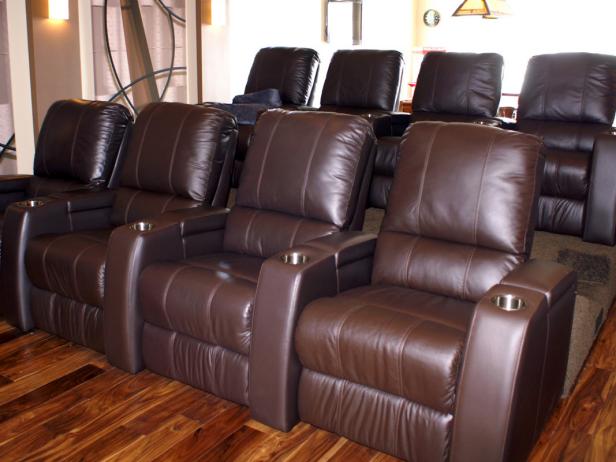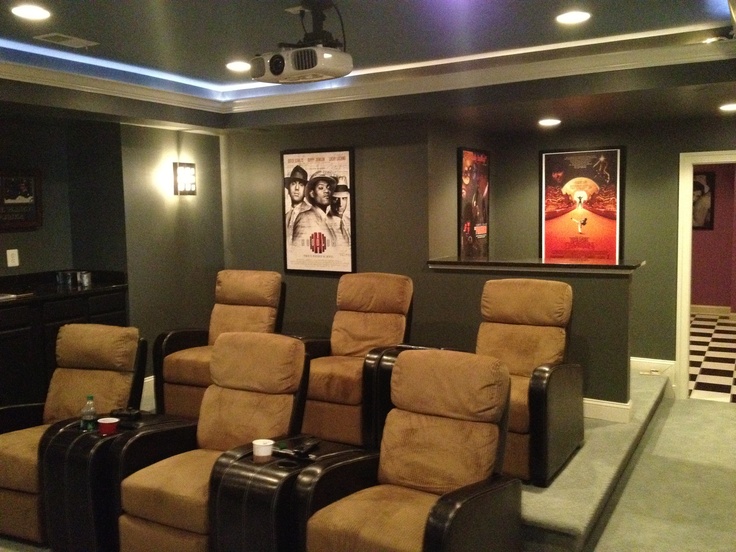How to build a Home Theater in a few steps
/How to build a Home Theater in a few steps

These days home comfort is a must to a happy life. There isn’t anything more comfortable then a movie theater right in your very home. No large crowds, dirty seats, and overpriced goodies. Get the quality of the movie theater in your home for your own personal enjoyment. There are 8 key steps that you must take to get to this movie theater level.
Steps to a Home Movie Theater
Location: Isn’t location always the first step? A good size for a home theater is 20ft by 13 feet if you are planning on doing this as a home addition. If you are looking to use what you have already, opt for a spare room that is at least 12ft by 12ft. You will want a location that is secluded from the rest of the home as to not disturb the surrounding space with noise. You will need to pay special attention insulation with this project. A rating of R30 is standard for the ceiling, floor and exterior wall insulation, though you will want to insulate the interior walls as well. Having R11 packed into the walls can reduce noise from rocking the rest of the house but you will need more after all the wiring and sound system is installed.
Surround Sound: Home movie theaters used to use a 7.1 surround sound system, though now you will want to do a 9.1 system to maximize your home theater experience. A 9.1 surround sound system merely means you have 1 subwoofer and 9 speakers.
You will want to have your speakers in these locations:
- Center – just above or below the viewing screen
- Left/Right – on either side of the screen at ear height
- Front Row – two speakers in the very front of the room
- Side Surrounds – on the side walls just behind the main row of seating
- Rear Surrounds – on the back wall (how far apart depends on the system)
Projector: Of course you need something to watch while you listen to the great surround sound you just installed. For a realistic, large-screen theater experience, you'll need to pre-wire a projector system. This involves just two cables:
- An HDMI cable to carry high-definition video to the projector
- A CAT5 control wire for accessing the projector with a radiofrequency (RF) remote. This will let you start your movies without pointing at the projector.
One end of these cables should extend from the ceiling at the rear of the theater, where the projector will hang. The other end should connect to your equipment hub. Be sure to pre-wire the hub with your cable or satellite feed, as well as high-speed Internet for streaming video.
Lighting: Installing appropriate lighting is an important feature for your home theater. Having remote controlled and dimmed lighting will set the atmosphere and take your home movie theater up a notch. Floor or aisle runner lighting is also a good idea to add.
Drywall and Final Sound Barriers: You will want to use a heavy duty drywall over your insulation, such as QuietRock Soundproof Drywall. This drywall can be very expensive and if it is over your intended budget, you can opt for regular drywall lined with sound dampening materials.
Final Touches: Now you can install your video and sound systems, and lastly your theater style seating. A good Blu-ray player will do far more than play discs. Through a pay-per-view service like VUDU, you can stream high-definition movies off the Internet whenever you like. Some Blu-ray players also network with your personal computer, making it easy to enjoy photos, music, and home videos in your theater. Theater seating comes in a wide range of styles, including genuine leather with cup-holders in the armrests. These are the kind of seats that beckon you to sit back, relax, and enjoy the feature presentation!
Enjoy your Home Movie Theater!





